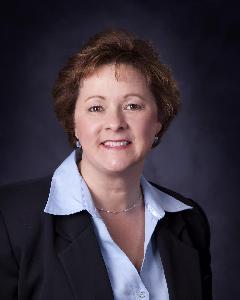02 Allergies and Hay Fever
Doctor, Explain Allergies and Hay Fever?
Insight into causes, treatment, and prevention of allergies and hay fever
Define Hay Fever and Allergies
Hay fever describes the symptoms of runny nose, itchy eyes and throat, uncontrollable sneezing and sometimes itching of the skin. It is not caused by hay, and does not produce fever. The correct name for the condition is seasonal allergic rhinitis.
Many seasonal "colds" are actually allergic rhinitis and will not respond to antibiotics. Seasonal allergic rhinitis happens when pollens and/or particles of plant or animal dander, mold spores, etc., come into contact with the lining of the nose, eyes, or throat. The body's immune system recognizes their presence and starts a reaction to prevent their invasion. In most people this is not a problem. However, in some patients the immune system is overactive and identifies normally harmless particles as dangerous, producing an excessive reaction that actually causes inflammation. This is known as allergy and the substances causing it are allergens. People are allergic to only certain substances, and the reaction does not usually appear until after several exposures to that substance.
The Causes
Hay fever is caused by pollens, the most significant in the United States is from ragweed. It begins pollinating in late August and continues until the first frost.
| Pollen Allergens | ||
|
Late springtime pollens come from the grasses, i.e. timothy, orchard, red top, sweet vernal, Bermuda, Johnson, and some bluegrasses. |
Early springtime hay fever is most often caused by pollens of trees such as elm, maple, birch, poplar, beech, ash, oak, walnut, sycamore, cypress, hickory, pecan, cottonwood, and alder. |
Colorful or fragrant flowering plants rarely cause allergy because their pollens are too heavy to be airborne. |
Certain allergens are always present. These include house dust, household pet danders, foods, wool, various chemicals used around the house, and more. Symptoms from these are frequently worse in the winter when the house is closed up. Mold spores cause at least as many allergy problems as pollens. Molds are present all year long, and grow outdoors and indoors. Dead leaves and farm areas are common sources for outdoor molds. Indoor plants, old books, bathrooms, and damp areas are common sources of indoor mold growth. Molds are also common in foods, such as cheese and fermented beverages.
Can Allergies Be Serious?
Allergic patients show reduced resistance to respiratory infections, and more severe symptoms when infections occur. Allergies are rarely life threatening, but often cause lost work days, decreased work efficiency, poor school performance, and a negative effect on the enjoyment of life. Considering the millions spent in anti-allergy medications and the cost of lost work time, allergies cannot be considered a minor problem.
Why See a Doctor?
The ENT specialist (otolaryngologist) will do a complete examination of your ears, nose, throat, head and neck. Careful evaluation of the sinuses will enable him to determine if infection or structural abnormality (deviated septum, polyps) are contributing to your symptoms.
Treatment
A number of medications are useful in the treatment of allergy including antihistamines, decongestants, cromolyn, and cortisone-type preparations. The medical management of allergy also includes counseling in proper environmental control. Based on a detailed history and thorough examination, your doctor may advise testing to determine the specific substances to which you are allergic. The methods employed by your otolaryngologists will indicate the materials to which you are allergic, and the degree of your sensitivity to them. The only "cure" available for inhalant allergy is the administration of injections that build up protective antibodies to specific allergens (pollens, molds, animal danders, dust, etc.). Your physician will oversee your progress throughout the course of treatment and care for any other nasal and sinus disorders that may contribute to your symptoms.
Prevention Tips
- Wear a pollen mask when mowing grass or house cleaning (most drugstores sell them).
- Change the air filters monthly in heating and air conditioning systems, and/or install an air purifier.
- Keep windows and doors closed during heavy pollination seasons.
- Rid the home of indoor plants and other sources of mildew.
- Don't allow dander producing animals (i.e. cats, dogs, etc.) in the home.
- Change feather pillows, woolen blankets, and woolen clothing to cotton or synthetic materials.
- Enclose mattress, box springs and pillows in plastic barrier cloth.
- Use antihistamines and decongestants as necessary and as tolerated.
- Sleep with the head of the bed tilted upwards. A brick or two placed under bedposts at the head of the bed helps relieve nasal congestion.
- Observe general good health practices; exercise daily, stop smoking, avoid other air pollutants, eat a balanced diet, and supplement diet with vitamins, especially C.
- Consider a humidifier in the winter as dry, indoor heat aggravates many allergic people, but beware of possible mold growth in the humidifier.
- Discuss hay fever and allergy symptoms with your physician when you experience an allergic reaction.
2011 AAO-HNS/AAO-HNSF


